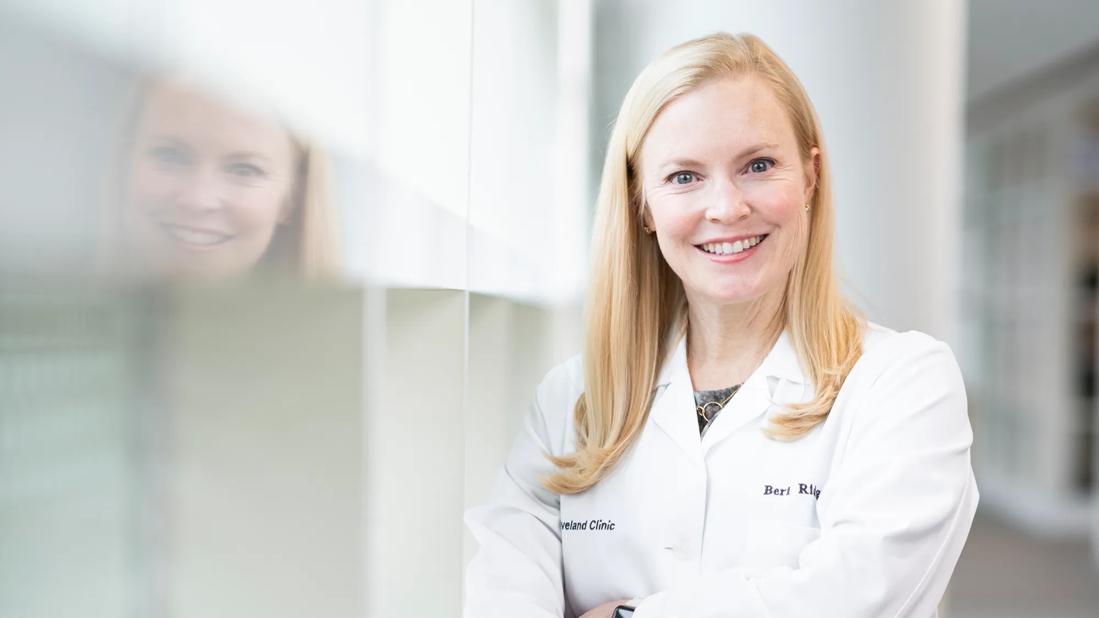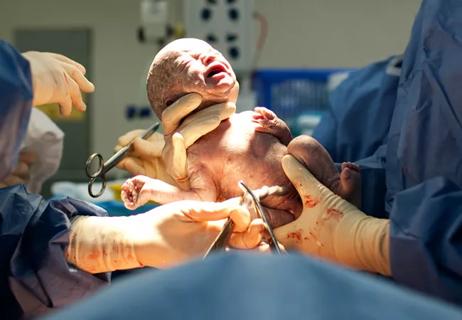A conversation with Beri Ridgeway, MD, newly appointed Chair of the Ob/Gyn & Women’s Health Institute

What do you consider the most exciting areas of opportunity in the field of Ob/Gyn and Women’s Health in the next 5-10 years?
Advertisement
Cleveland Clinic is a non-profit academic medical center. Advertising on our site helps support our mission. We do not endorse non-Cleveland Clinic products or services. Policy
I think one of the exciting things about our institute is our dual focus: big solutions that affect communities, particularly in terms of infant and maternal mortality, and also pushing the envelope with innovation and education, including our fetal surgery and uterine transplant programs.
The health of women is predictive of societal health. Infant and maternal mortality rates are issues that are central to our community, our doctors and public health. Addressing the multifactorial risk factors, including healthcare disparities, will require rethinking the way we currently deliver care. We need to work collaboratively with other healthcare providers, both in different disciplines within Cleveland Clinic and also outside our system. We also need to work with our community and community organizations, such as First Year Cleveland.
We are already actively taking part in this effort to address the complex problems that contribute to the infant mortality rate in Cuyahoga County, which was 8.1 per 1000 live births for the 12-month period ending March 31, 2018, according to data from the Ohio Department of Health. These data reveal profound racial disparities: the infant mortality rate is 2.9 per 1000 for white infants compared to 16.5 per 1000 among black infants. A deeper dive into 2017 numbers, provided by First Year Cleveland, reveals particularly abysmal mortality rates in two zip codes within Cuyahoga County. The communities within zip codes 44110 and 44115 have infant mortality rates of 34.3 per 1000 and 36.6 per 1000, respectively. It is unacceptable that an infant’s chance of survival is so highly dependent on the location of the family to which it is born.
Advertisement
As a healthcare system in the community, we need to do everything possible to partner for a solution. We are working to address extreme prematurity, reduce racial disparities and eliminate sleep-related deaths. However, these are quite complex problems that will not be solved with an after-visit summary on proper sleep, or me standing at a podium saying “put your baby to sleep on its back.” Over the next several years, we’ll be putting even more resources into the group medical appointment structure of CenteringPregnancy, which provides education and support for women throughout their pregnancy and into parenting. We are shifting our model of postpartum care to see patients at least twice during the first 12-13 weeks after birth in order to provide additional support and resources for pain, postpartum depression, breast feeding, etc. The Ob/Gyn & Women’s Health Institute is fully committed to collaborating in order to make a meaningful impact on the community.
You’ve published a lot throughout your career. What makes you so passionate about research?
By nature I’m a very curious person. It’s this curiosity that motivated me to pursue a career in medicine. I like to understand the “why” behind the things I see, to test my ideas. In research, my favorite outcomes have been when I was proven wrong. For example, we performed a decision analysis on the risks and benefits of opportunistic salpingectomy during vaginal hysterectomy. At the outset of the project, I hypothesized that the additional step of removing the fallopian tubes would not be cost effective compared to vaginal hysterectomy alone. In the long term, however, salpingectomy at the time of vaginal hysterectomy adds minimal complications and saves money mostly by avoiding additional adnexal surgery.
Advertisement
Will you continue to provide patient care in your new role?
Absolutely. I love taking care of patients. I love operating. In addition to it being my passion, it also helps me understand the demands on our providers and the needs of our patients.
What are your thoughts about today’s healthcare environment?
The healthcare environment is changing rapidly. In the long term, I think these changes will be for the better. But during these changes, it can be very stressful for our patients and for us. In Ob/Gyn, we really straddle different models in modern healthcare, namely value and volume. It can be a challenge to find the right balance between the two. In our institute, we are charged with providing a care model that spans the life of a woman. The care we provide is both routine and highly specialized. I’m glad to be at the table for these discussions to ensure we provide patient-centered care for women in a way that is both cost effective and high quality.
Watch this video for more about Dr. Ridgeway.
Advertisement
Advertisement

Optimizing the environment can measurably reduce physical strain

On the importance of monitoring a woman’s reproductive aging process

What’s next for maternal-fetal medicine?

A conversation with Giancarlo Mari, MD

Postpartum perineal lacerations are underdiagnosed and undertreated

Progesterone injection to prevent preterm birth is controversial following a recent study

Delaying treatment of ectopic pregnancy is dangerous

Increases may be related to opiate crisis and access to reproductive healthcare